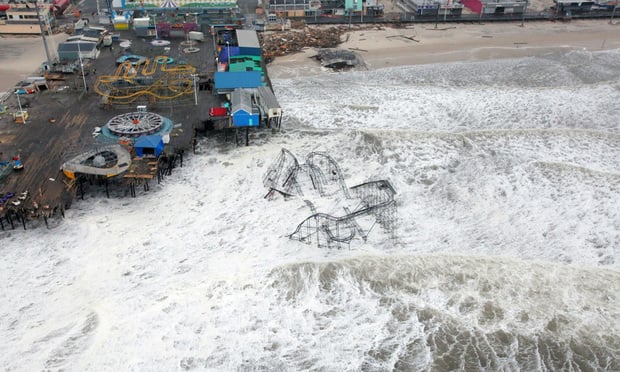 Recent studies indicate that climate change could cause a storm with an increase in wind loss of about 50% and an increase in storm surge loss of about 70% compared to what occurred during Hurricane Sandy. (This image of the New Jersey shore after Hurricane Sandy was captured by U.S. Air Force Master Sgt. Mark C. Olsen.)
Recent studies indicate that climate change could cause a storm with an increase in wind loss of about 50% and an increase in storm surge loss of about 70% compared to what occurred during Hurricane Sandy. (This image of the New Jersey shore after Hurricane Sandy was captured by U.S. Air Force Master Sgt. Mark C. Olsen.)
It has been ten years since Hurricane Sandy devastated the New Jersey/New York area. The storm was responsible for $65 billion of economic damage in the U.S., according to the official NOAA Report (2013). Decadal remembrances of such significant storms serve to remind the (re)insurance industry what storms were capable of in history and to prepare better for future renditions. That is especially true when climate change factors into the recipe. This anniversary article pays homage to Hurricane Sandy by helping us understand how much worse a storm like it could be in the future.
|A Category 1 superstorm
Hurricane Sandy made landfall with maximum sustained winds of 80 mph, a modest Category 1 storm. But that metric alone does not begin to acknowledge how the storm outperformed those winds in terms of damage.
Recommended For You
Want to continue reading?
Become a Free PropertyCasualty360 Digital Reader
Your access to unlimited PropertyCasualty360 content isn’t changing.
Once you are an ALM digital member, you’ll receive:
- Breaking insurance news and analysis, on-site and via our newsletters and custom alerts
- Weekly Insurance Speak podcast featuring exclusive interviews with industry leaders
- Educational webcasts, white papers, and ebooks from industry thought leaders
- Critical converage of the employee benefits and financial advisory markets on our other ALM sites, BenefitsPRO and ThinkAdvisor
Already have an account? Sign In Now
© 2025 ALM Global, LLC, All Rights Reserved. Request academic re-use from www.copyright.com. All other uses, submit a request to [email protected]. For more information visit Asset & Logo Licensing.








